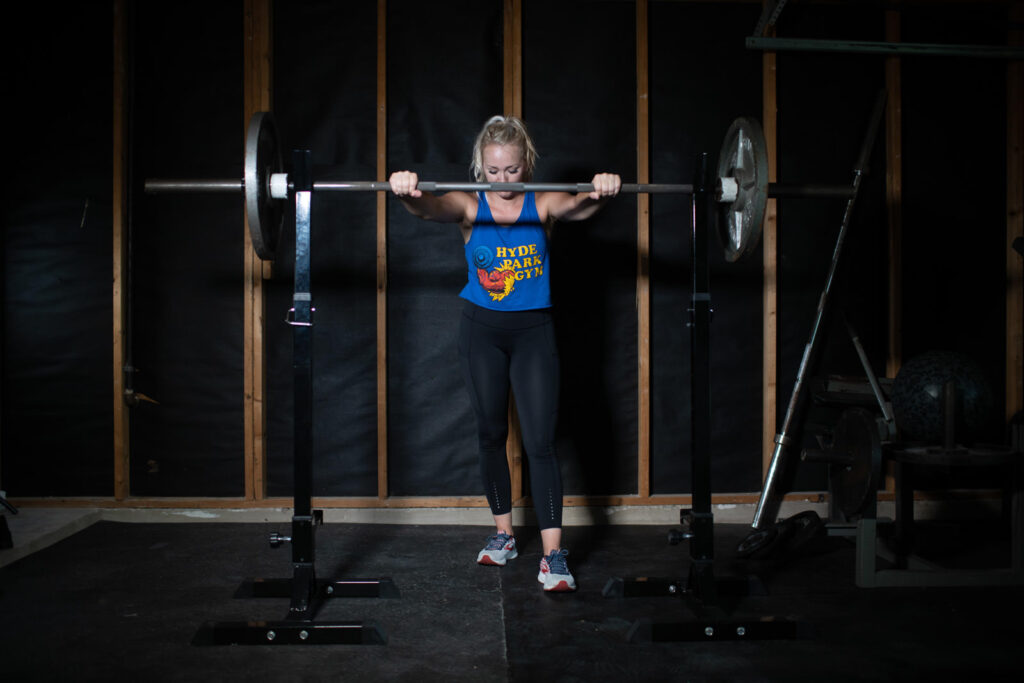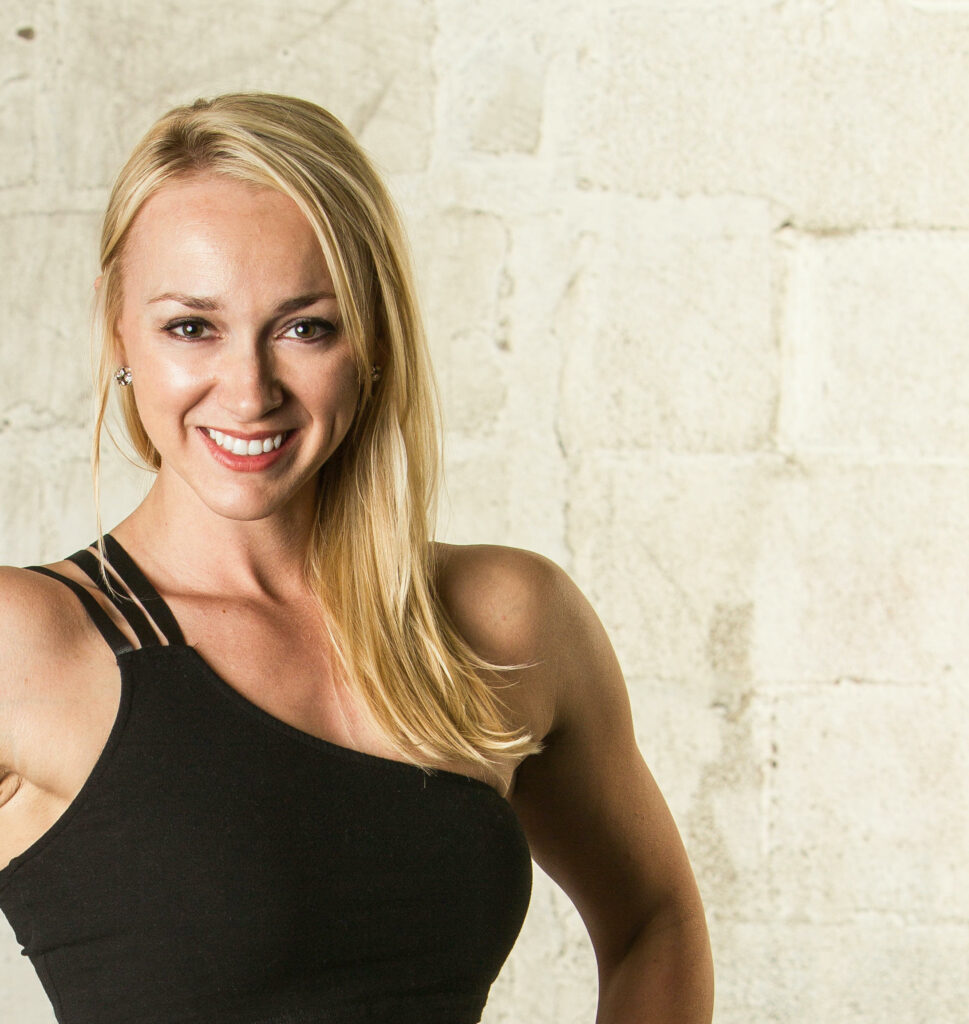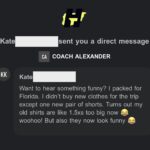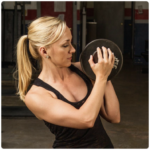Squats are one of the most important lifts to train, both because of their ability to change the physique, and because of the phenomenal carryover to real life movement. Squats are an essential movement pattern.
Need to sit down and not PLOP on the couch? That’s a squat. Want to increase your speed and power for sport? Squats can help with that.
Want to maintain your independence for your whole life, ie, not get stuck on a low chair or a toilet? Fill out your jeans a little more? Make your hikes feel stronger? Squats.
Despite their stellar benefits to health and performance, squats are often blamed for low back injury. In reality, squats do not cause low back pain. Poorly executed squats can cause low back pain.
Read on for how to maximize your squat performance and squat technique so you can build your strength, change your body, and prevent pain.

Why You Might Get Lower Back Pain After Squats
Squats are a full body lift. They heavily involve legs, glutes, back and core. Done properly, squats integrate the whole body in a natural movement. It usually becomes apparent when one piece is a weak link. For example, many people’s legs can handle more than their core (abs and lower back) can.
Note that there are many types of squats. People usually think of the barbell back squat when they hear squats, but there are many ways to squat.
Sometimes lifters have great form, and relatively weak core muscles. They can see great progress if they work on bringing their core strength and upper back strength up to speed. Other times, lifters have poor form that doesn’t necessary cause back pain, but can limit progress. Finally, a common mistake is that some lifters use poor technique that actually can cause back pain.
Also unforunately, sometimes people just do stupid stuff in the gym. Not warming up properly, adding too much weight to the bar from one set to the next, and trying to go heavy too frequently can all have suboptimal results, including lower back pain after squats.
Barbell rows are a great exercise for strengthening your whole back. Here’s a solid tutorial on how to do barbell rows.
How to Avoid Lower Back Pain After Squats
The best ways to avoid lower back pain from squats are to learn proper technique for your warm ups, work on perfecting your form, and follow a well designed program.
The warm up is not just about getting warm; it is much more important than that. The warm up is a physiological process to get your nervous system engaged, get your joints moving, and increase your heart rate and blood flow for the upcoming exercise. By warming up properly and working up in weight with exercise specific warm ups, you’ll actually be able to do more work and better work.
Let me repeat: warming up well is a performance enhancement strategy. Trust me!
Perhaps the most important way to prevent and avoid lower back pain is to learn to squat with optimal form. Every person’s squat will look different because of differences in limb length and individual build, but every individual has an optimal squat form.
Learning proper form will help you use your legs and glutes as they are intended to be used in the squat, allowing your back to be used in the way that it is intended. This way your back is not overcompensating for not using your prime movers (the leg and glute muscles) as they should be during the squat.
Find a Good Squat Program
Finally, follow a good program written by an experienced coach. People who wing it without a program often lift heavy loads too often, too light, infrequently, miss major muscle groups, or skip assistance exercises that help you prevent injury. I recommend programs by Aaron Ausmus of Pen and Paper Strength App and Zack Phillips of ReadyUp Athletic Development. I would be honored to help you with a program as well. Check out these or contact me about a custom program written for your goals.
How Different Squats Can Help You
When you think of squats, you probably think of barbell squats, and probably back squats. This is when the bar is on your back (very creatively named) as opposed to front squats, which is more Olympic/weightlifting style. I like both and I encourage you to practice both!
Back squats cause more of a hinge at the hips, which is fine and safe! IF your back is tender, however, these might be less comfortable.
In that case, elevate your heels and do front squats. This will allow you to stay in a more upright position through your spine.
Both front and back squats are great lower body work, whichever you do. Also with both, maintain good form, light enough weight for a big range of motion, and an engaged core and neutral spine.
Final Notes on Squat Form
It is easy to get lost in the weeds with squats and squat form. The easiest way to do this is to find a million YouTube videos that tell you you have anterior pelvic tilt, posterior pelvic tilt, butt wink, tight hip flexors, tight hips, poor ankle mobility, lifting too heavy and squashing your lumbar spine, or a million other major issues people love to split hairs about.
Good technique is always easier to maintain with lighter weight, of course. But, you do want to build your strength and progress to being able to lift heavy weight. The best way to do this is to start light and practice ideal squat mechanics deliberately.
Yes – most people can improve their squat position and technique, but the benefits of squats hugely outweigh the risks. Remember – you can start light! You should start light in the first place. Squats don’t have to be scary! They aren’t some dangerous exercise that will break you. In fact, the good news is, squats done the right way will make your life so much better!
How to Recover From Lower Back Pain Caused by Squats
Squatting is a natural movement and most people can find a way to do it pain free. If you suspect you are having lower back pain caused by squats, then something must change. In the short term, back off squats, especially if you are doing barbell squats and are going very heavy. Do not stop your movement, though! This is not a free pass to stop exercising.
If the pain is exceptionally bad, please contact a doctor or a physical therapist. The following advice applies to pain that is manageable and is not medical advice.
Movement is good for the body, so continue movement by walking, swimming or other low impact exercise. You can add in unweighted squats as a test to see how it feels. If you’d like to bump it a notch, you can add lunges or stationary lunges. While lunging, the back can typically remain upright, which is generally a safe position.
Add in movements such as the McKenzie press, child’s pose, unweighted reverse hyperextensions, back extensions and dead hangs. The spine is made to move through spinal flexion and extension in conjunction with a strong core. With a strong back and core, risk of muscle strain is lessened and lumbar discs are protected.
You can also look at other factors in your life that might be contributing to lower back pain. Do you have good posture when you sit, and do you have an ergonomic setup where you spend most of your work day? Check out your mattress too. Ideally you spend 8 or so hours there each night. It is important that you don’t sleep in a funny position in that little dip that develops as mattresses age.
This glute exercise can strengthen glutes and help reduce back pain
Most importantly, remember that this too shall pass! Keep a positive attitude and look to athletes and people you know who have come back from injuries. Your body is always actively working to heal you – help it as much as you can!
Benefits and Variations of Squats
Because squats use so much of the body, they can be very taxing on the nervous system, and thus send a large signal to the body to adapt. In other words, when you challenge yourself on squats, they feel hard because they are hard!
One way to avoid injury and overuse is to become proficient in squat variations. This will develop your strength in many ways, at varying angles, and help prevent overuse injuries. Practice goblet squats, dumbbell squats, barbell squat, deep squats, full squats. These are some of the best exercises, and when you can do these movements well, you’ll decrease your risk of injury, chance of knee pain, work through mobility issues, and get stronger.
Check out this post about 7 squat variations you can do with little equipment.
Keep Squatting to Build a Strong Back!
When done correctly in a well written program, lower back pain from squatting is rare. In fact, squatting correctly does wonders for strengthening your back and preventing low back pain and injury.
While it might take some time on the front end to learn and practice ideal squatting form, or trouble shoot your current squat form, it is well worth the effort to be strong.
Accessory Work for Lower Back
It is also an excellent idea to add in accessory work for your lower back. Some machines that you might see but not usually utilize at the gym can really help with supplemental lower back strength. These include the back extension and reverse hyperextension. You can read a detailed tutorial on these lower back machines here.
Enjoy lifting, my friends, and please be in touch if you have questions I can help you with. Kathryn@kathrynalexander.com
Related: strong hamstrings can help keep your back pain free as well. Check out this leg curl machine to help build hamstrings strength.
Work With Me!
If you are looking for a personal trainer in Austin, I’d love to talk with you! If you are not in Austin, Round Rock, or central Texas, let’s talk about online training.
Message me here for a free consult about personal training in Austin, Texas, or here for online personal training, and we’ll discuss your goals, background, equipment availability, schedule, and exercise preferences.
Let’s get you strong and healthy! 

About the author
Kathryn Alexander is a strength coach and personal trainer in Austin, Texas. She loves hiking, college football, and the feel of a perfectly knurled barbell. Read more about Kathryn here.












